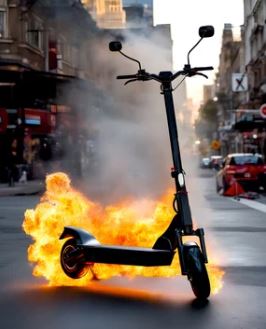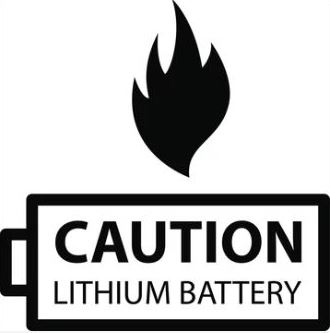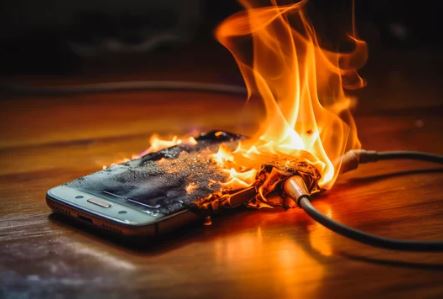Over the past 30 years, that I have managed Survival Solutions, I have worked tirelessly to help our clients and communities identify and mitigate fire risk within their homes, properties and businesses, with the primary objective of protecting human life.
During this time, I have seen countless examples where fire has occurred in circumstances that seem bizarre but obvious upon further investigation.
It has now dawned on me that we are at the beginning of a serious fire risk in which traditional fire protection equipment will not work against modern materials and technologies.
The past twelve months have seen a massive increase in building fires caused by the explosion or ignition of lithium-ion batteries used in e-scooters and e-bikes. While most mobility devices are manufactured and sold in Australia under mandatory safety standards, some cheaper models bought online are not regulated. Many of the e-scooters and e-bikes that cause fires can be poorly designed, and as a result, the batteries overheat and ignite when overcharged.
If you happen to have a lithium-ion battery fire at home or work, it will likely keep burning along with everything around it. Your best method of protection is to understand how to keep the battery stable and prevent it from overheating.

What is a Lithium-ion battery?
Lithium-ion batteries consist of multiple lithium-ion cells along with a lightweight, protective circuit board, making it one of the most widely used battery technologies in the world today.
Is it normal for lithium-ion cells to produce heat?
- In ideal conditions, the heat can dissipate from the cell. However, in thermal runaway, the lithium-ion cell generates heat at a rate several times higher than the rate at which heat dissipates from the cell.
- In lithium-ion cells, the movement of electrons and lithium ions produces electricity. A small amount of heat usually accompanies the process of charge and discharge.
- The cell reaches thermal runaway when its temperature rises uncontrollably at a rate greater than 20° centigrade per minute with maximum temperatures reaching more significant than 300°C accompanied by gas and electrolyte venting, smoke or fire or a combination of all.
Lithium-ion batteries and fire risk
- With rechargeable lithium batteries now being used in many household electrical products, building fires were bound to increase.
- Almost every mobile electronic device has some Lithium-ion battery installed, including e-bikes and Scooters, mobile phones, IPADS, tablets, Personal Computers or PCs, electrical appliances, toys, drones, e-cigarettes (vapes) and portable power tools and equipment.
- Combining this rise in use of lithium-ion, with a lack of education around the dangers of managing or storing these lithium powered devices the risk is growing exponentially.
How to identify a Lithium-ion battery
Lithium-ion batteries come in all shapes and sizes depending on the power requirement of what they are operating. This could be round, square, or flat. Lithium-ion batteries can be challenging to identify as there is no standardised labelling.
- When there is a Li or Lithium mark on the battery, you can assume it is lithium-ion.
- Some other markings might be Li-ion, lithium-ion, Lithium polymer or Li-po.
What are some of the causes of Lithium-ion Battery Fires?
Lithium-ion batteries can be remarkably concentrated with energy and are manufactured from highly flammable material. The potential for fire or explosion is exceptionally high when placed under certain unusual conditions.
Several situations can lead to a Lithium-ion battery structural failure, such as
- Manufacturing defects
- Physical abuse, such as high impact, crushing, rupture and violent movements
- Exposure to significant heat or sun and extreme temperatures
- Overcharging or using charging equipment not designed for the device.
- System failures, short circuits and battery cell failures.

What is Thermal Runaway?
Thermal runaway is best described as something that burns, whereby the gases produced are highly flammable and continue to increase the temperature of the fire, exposing other nearby combustibles to the risk of flashover or spontaneous combustion.
- The term thermal runaway is the significant risk surrounding Lithium-ion batteries. It can best be described as an out-of-control fire, which includes an explosion, considerable heat, smoke and toxic fumes.
- It is considered the terminal state in which lithium-ion battery cells reach an uncontrollable self-heating state and fire phenomenon.
- Each Li cell will start to eject gas, shrapnel and small particles
- A cell is said to have reached thermal runaway when its temperatures increase from 20 degrees per minute to a maximum of about 300 degrees, causing spontaneous combustion.
Is it a standard process for Lithium-ion batteries to produce heat?
- The transition or movement of electrons and lithium-ions inside the battery ion cells produces heat. A small volume of heat generally accompanies the process of charge and discharge.
- Under normal operating conditions, this generated heat is easily dispersed into the environment. However, when thermal runaway occurs, the lithium-ion generates heat several times faster than it can be spread from the cell.
- This causes the battery to overheat and eventually ignite, creating an intense fire that cannot be extinguished.
How to prevent Lithium-ion battery fires
- Do not leave devices exposed to heat and sun in vehicles or house
- Ensure the product purchased complies with Australian standards or similar
- Don’t mix and match charging devices
- Please do not leave it on charge once the device is full
- Use timed PowerPoint devices to turn the power off automatically
- Keep away from naked flames, BBQ and fire
- Read operating instructions before use
- Keep in well-ventilated areas
How to extinguish a Lithium-ion fire?
Lithium-ion batteries cannot be extinguished using traditional methods such as Dry chemicals, Co2, Foam or water.
Lithium fires require special types of fire extinguishers such as such as F500 or aqueous vermiculite dispersion technology (AVD). Both of these types of fire extinguishers can be supplied and installed by Survival Solutions.
For more information on suitable methods of extinguishing lithium-ion fires, get in touch with us today.
Stay safe and enjoy your devices!
